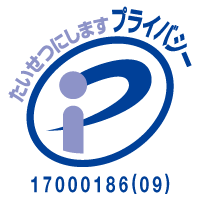Full Description
The use of technology in various language teaching and learning contexts has become increasingly commonplace in recent years. This has resulted in an enormous range of choices for teachers and researchers in the field, but at the same time, it has also become more and more difficult for those who are new to using technology for language teaching and researching to keep up with these changes. This handbook provides a wide-ranging, accessible overview of technology in language teaching and learning by leading experts in the field from around the world. The chapters are split into six thematic parts, covering a multitude of subject areas whilst also highlighting the relationships between the topics covered. Showcasing the diversity and complexity of the field in a comprehensive yet approachable manner, it is essential reading for academic researchers and graduate students, as well as pre-service and in-service teachers in various global contexts.
Contents
Part I. Laying the Foundations: 1. Introduction Glenn Stockwell and Yijen Wang; 2. Impact of context Jozef Colpaert and Astrid Cerpentier; 3. Current and emerging theories in CALL Regine Hampel and Helen Lee; 4. Shifting focus of call research Yijen Wang; Part II. Environments: 5. Blended learning Paul Gruba; 6. Distance learning Fernando Rosell-Aguilar; 7. Flipped classrooms Hsiu-Ting Hung; 8. Call in low-tech environments Francisca M. Ivone and Thomas N. Robb; Part III. Tools: 9. Mobile devices Mark Pegrum; 10. Teaching languages with games Frederik Cornillie and James York; 11. MOOCs Agnes Kukulska-Hulme and Fereshte Goshtasbpour Barbara Conde-Gafaro; 12. Adaptive instruction Mathias Schulze, Catherine Caws, Marie-Josée Hamel and Trude Heift; 13. Virtual reality Kristi Jauregi Ondarra, Sabela Melchor-Couto and Silvia Canto; Part IV. Social Aspects: 14. Social interaction and learning Lara Lomicka and Stacy Benoit; 15. Virtual exchange and telecollaborative learning Begoña F. Gutiérrez and Robert O'Dowd; 16. Collaborative learning Lara Ducate and Nike Arnold; 17. Motivation Richard Pinner; Part V. Practice: 18. Learner training Chun Lai; 19. Digital media and interculturality Julie Choi, Rhett Loban and Sue Ollerhead; 20. Literacies for teaching Richard Kern; 21. Overcoming teacher resistance Yijen Wang; 22. Online communities for teachers Yurika Ito; 23. Task-based language teaching Sima Khezrlou; Part VI. Language Skills and Areas: 24. Speaking Gilbert Dizon; 25. Listening Glenn Stockwell; 26. Reading Meei-Ling Liaw and Sabrina Priego; 27. Writing Hassan Mohebbi and Ali Panahi; 28. Pronunciation Tatsuya Kawahara and Masatake Dantsuji; 29. Vocabulary Jang Ho Lee and Dongkwang Shin; 30. Grammar S. Susan Marandi; 31. Conclusion Glenn Stockwell and Yijen Wang.







